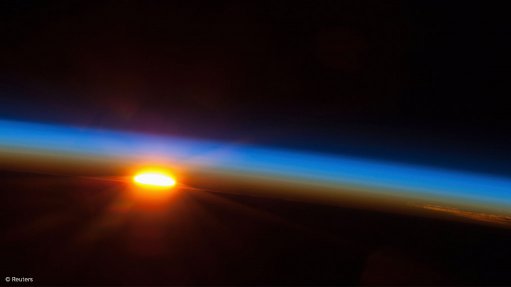
The Namibia-based High Energy Stereoscopic System (HESS) recently measured pulsed gamma rays in the southern sky from ground level for the first time, strengthening the country’s bid to host the world’s largest gamma ray telescope, the Cherenkov Telescope Array (CTA), the University of the Witwatersrand (Wits) has revealed.
Wits, in collaboration with international scientists and other South African universities including North West University, the University of the Free State and the University of Johannesburg were responsible for the operation of the HESS telescope.
Wits physicists were particularly involved in data analysis techniques, the development of theoretical interpretation tools of both extragalactic and galactic sources, and in the operational shifts at the telescope location in Namibia.
Wits explained that the radiation measured by the HESS originated from the Vela pulsar, a neutron star that was formed when a massive star collapsed.
“This is the first pulsar detected by HESS II – the latest upgrade of the HESS with a new configuration of five telescopes – and the detection is only the second pulsar ever detected by ground-based gamma ray telescopes, after the Crab pulsar was detected by the Veritas observatory in Arizona, in the US, in 2011,” Wits pointed out.
Wits School of Physics Professor Sergio Colafrancesco said this latest measurement showed that, with the fifth large telescope that was added to the existing four-telescope array in 2012, HESS was producing “extremely interesting” science.
“It is also very good news for [Namibia’s] bid to host the CTA, and for South Africa and astrophysics research groups such as the Wits Astrophysics Group, as it will give Southern Africa a unique advantage to explore fundamental questions such as the nature of dark matter or the origin of cosmic rays with the aid of the world’s most powerful radio telescopes,” he said.
Should Namibia’s bid be successful, Southern Africa would be the largest platform for multifrequency astronomy, hosting telescopes in gamma rays, namely HESS and CTA, optical wavelengths at the South African Astronomical Observatory, in Sutherland, and radio waves at the Square Kilometre Array and MeerKAT sites, Colafrancesco said.
Currently, two sites in the southern hemisphere – Aar, in Namibia, and the European Southern Observatory, in Chile – were strongly being considered for the establishment of the CTA, with Leoncito, in Argentina, a third potential site.
One site would be selected to host the CTA at the end of this year.